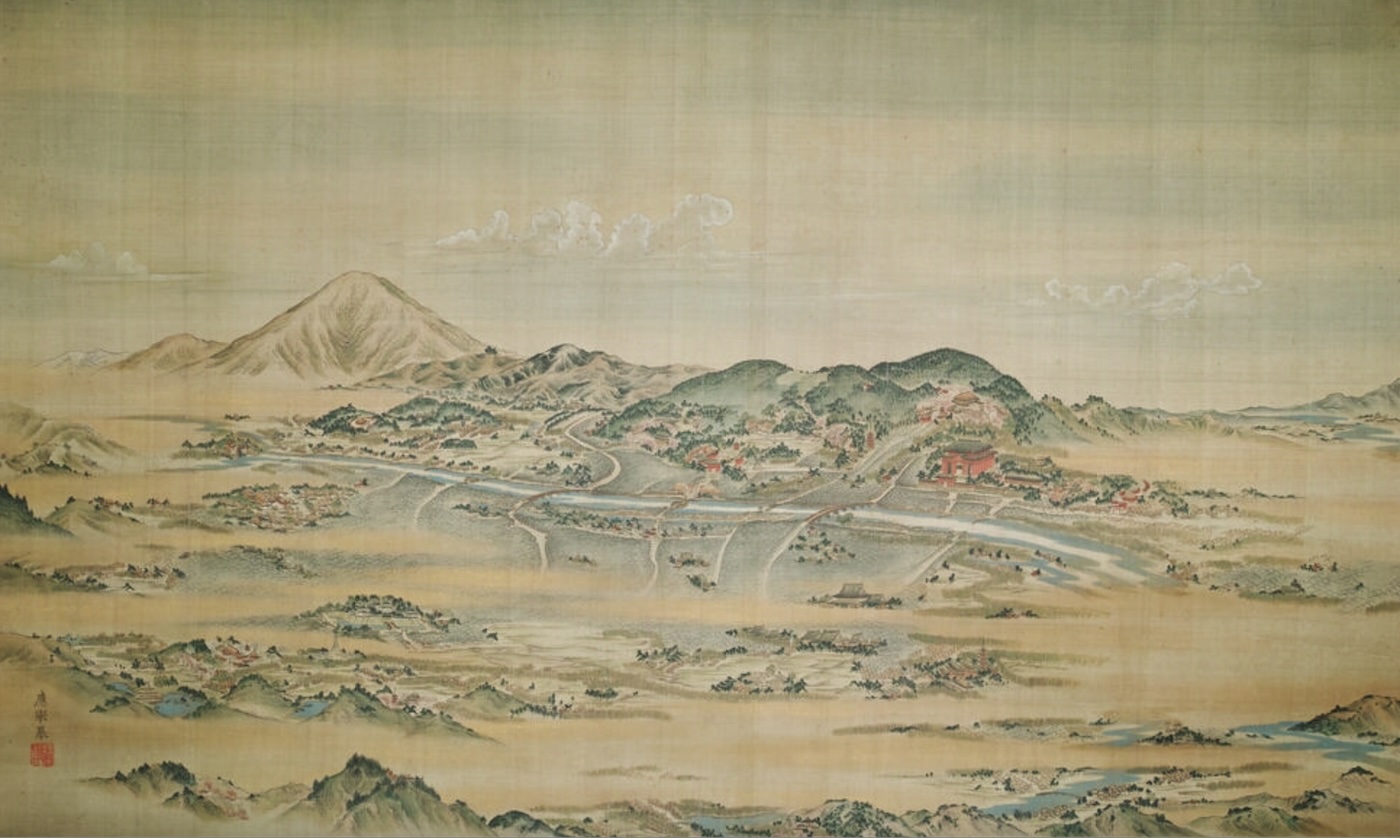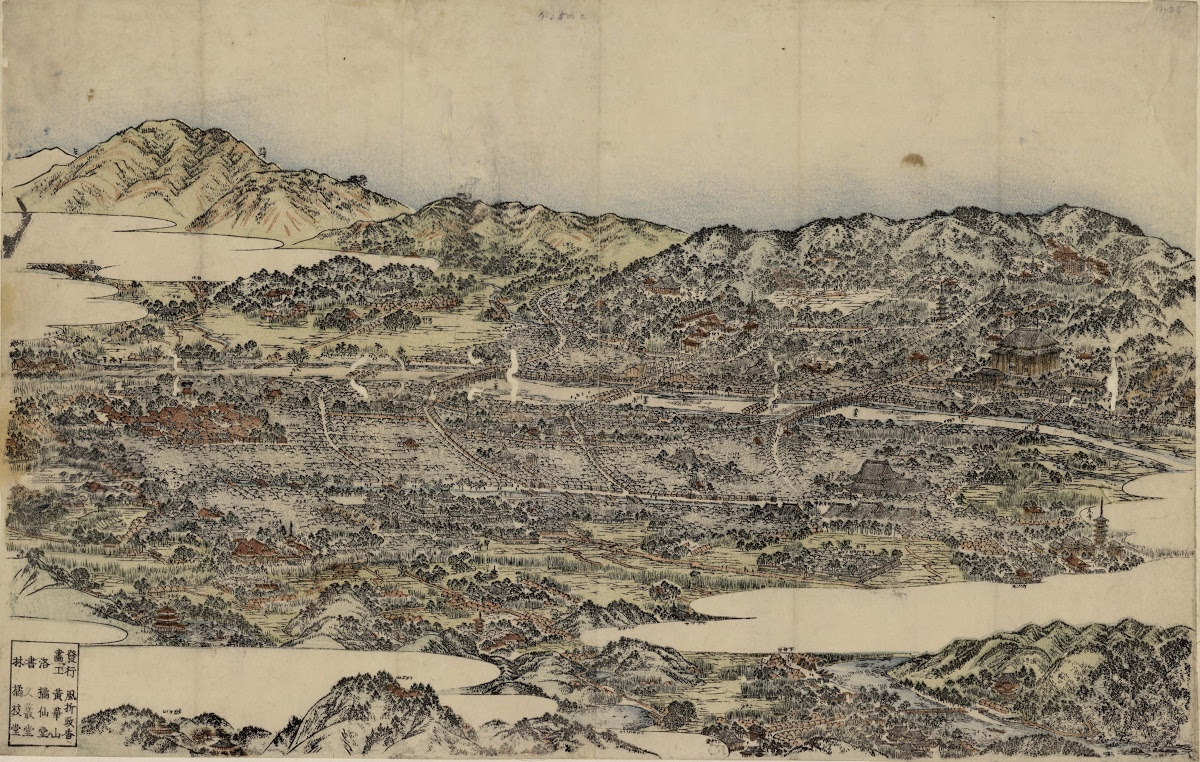This talk investigates two early nineteenth century representations of Kyoto. The first is a detailed, printed map by Kō Kazan (1784-1837) of 1808, Karaku ichiran zu (Panoramic View of Kyoto), which presents a sweeping eastward view across the city. Closely resembling this printed map and most probably also produced by Kazan is the second work, a painting titled Kyōraku fukanzu (A View of Kyoto) housed in the collection of the Kobe City Museum and often attributed to the famed late eighteenth century artist Maruyama Ōkyo (1733-95). How did the misattribution occur? This question instigated a study that navigates intersections with the printed Kyoto map genre, the painted cityscape tradition originating with the “Scenes in and out of the Capital (Rakuchū rakugaizu)” screens, and recent art historical research on Kō Kazan and his work. What was uncovered is that the popular Kyoto map and its painted version both capture a unique moment in the long history and art history of the city, one that arose following the devastation of the Great Tenmei Fire of 1788. This talk thus proposes that the printed map, Panoramic View of Kyoto, and the painting, A View of Kyoto, express a form of nostalgia, one that is more complex than that of a longing for the past.
 |
 |
| Kyōraku fukanzu京洛俯瞰図 (A View of Kyoto), early 19th c., Kobe City Museum, https://www.kobecitymuseum.jp/collection/rights |
Kō Kazan横華山, Karaku ichiran zu 華洛一覧図 (Panoramic View of Kyoto), |
Pauline Ayumi Ota received her Ph.D. from Stanford University in 2007. She is an art historian whose research examines late eighteenth and early nineteenth century cityscapes/views of Kyoto, early modern Japanese maps, and the supernatural in Japanese art. She holds an appointment in the Department of Art and Art History as Associate Professor of Art and Art History (History of Japanese Art), as well as serves as a member of the Asian Studies Program Steering Committee and the Global Studies Fellows Program Steering Committee, at DePauw University in Greencastle, Indiana (USA).
At the Sainsbury Institute, she will complete a journal article on the famed print triptych by Utagawa Kuniyoshi (1798-1861), Takiyasha the Witch and the Skeleton Spectre of 1843-47. Preliminary findings on this work were presented previously as part of a keynote address titled “Of Myths and Monsters: Magical Thinking in Later Premodern Japanese Art” for the Indiana University Art History Association 33rd Annual Graduate Student Symposium (theme: Essays in the Esoteric: Magical Thinking in the Humanities) in April 2023. Further research during her six months in Norwich will concentrate on three key areas: the literary work(s) that inspired the print, women of the later Tokugawa era (1750-1868), especially early nineteenth century Japanese conceptualizations of witches/sorceresses, and Kuniyoshi’s prints featuring magical or supernatural subjects.
Dr. Ota’s recent publications include “Mapping the Yodo River and its Banks” in Artibus Asiae from 2020 and the December 2021 Andon article, “The Poetry of Play: Hybridity in Amusements of the Four Seasons of Kyoto.” She is also finalizing her book manuscript, Seeing the City Anew: Maruyama Ōkyo’s Cityscapes of Kyoto, 1758-1790 and Their Afterimages.
